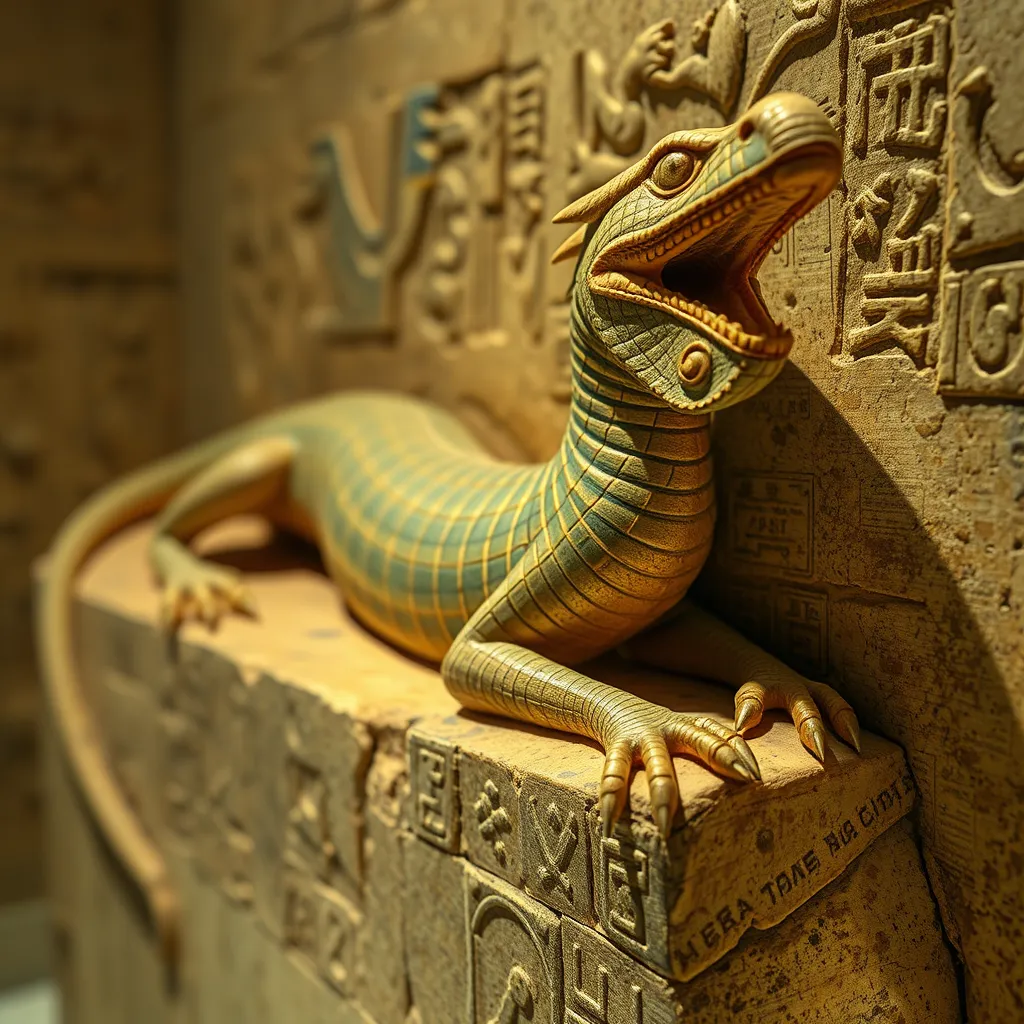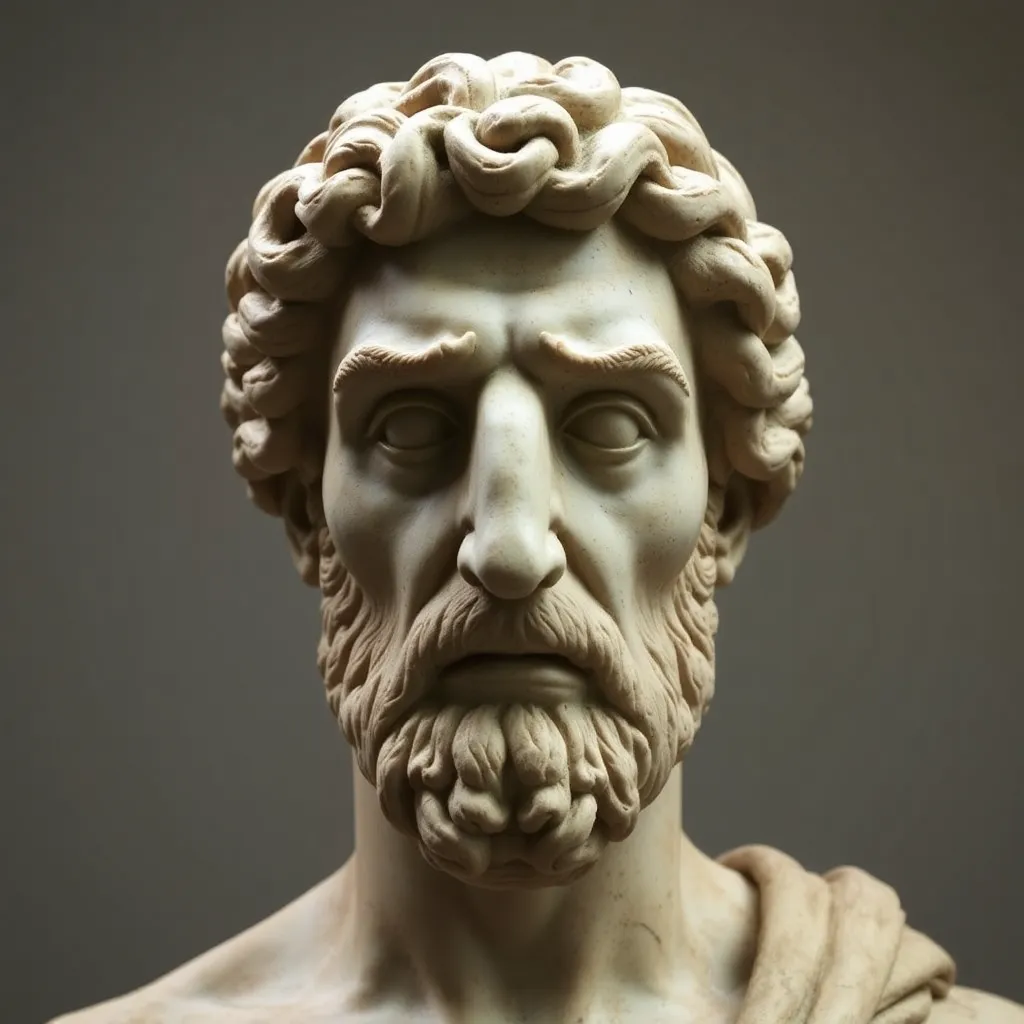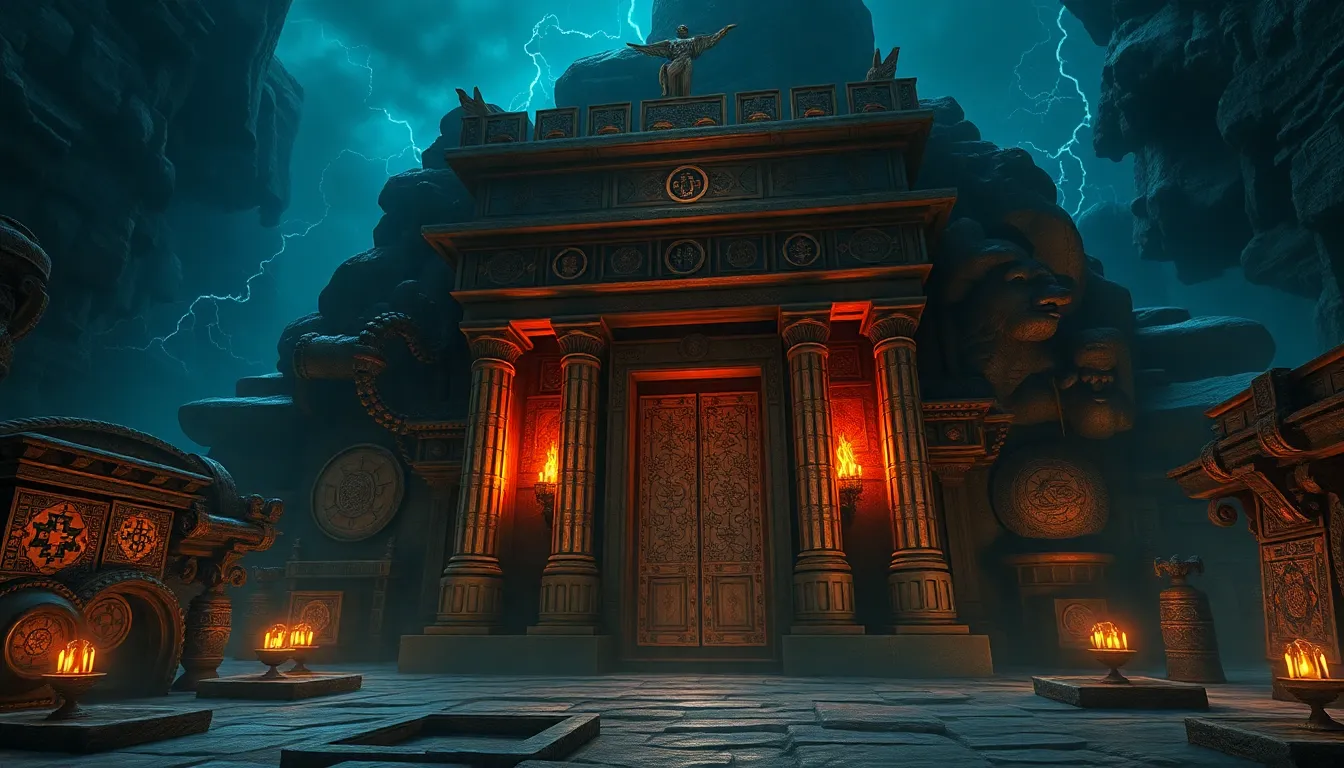The Basilisk in Ancient Egyptian Tombs: Exploring the Monster’s Representation in Funerary Art
I. Introduction
The Basilisk, a creature steeped in legend, is often depicted as a serpent or dragon, possessing the ability to kill with its gaze. Its mythical characteristics, including its lethal breath and poisonous touch, have made it a subject of fascination throughout history. In Ancient Egyptian culture, where the afterlife was of paramount importance, the depiction of such creatures in funerary art serves both aesthetic and symbolic purposes.
Funerary art in Ancient Egypt was not merely decorative; it played a critical role in ensuring the deceased’s safe passage to the afterlife. The purpose of this article is to explore the representation of the Basilisk within this context, examining its cultural implications and significance in tomb art.
II. Historical Context of the Basilisk in Ancient Mythology
A. Origins of the Basilisk in ancient texts and folklore
The Basilisk’s origins can be traced back to various ancient texts, including the writings of Pliny the Elder and later medieval bestiaries. Described as a creature that could cause death with its gaze, the Basilisk became a symbol of both danger and fascination in European folklore.
B. The Basilisk’s symbolic meaning in various cultures
Across cultures, the Basilisk has been interpreted as a representation of evil, death, and destruction. However, it also embodies protection—guarding against malevolent forces. This duality is significant when examining its role in funerary art.
C. The intersection of the Basilisk myth with Ancient Egyptian beliefs
In Ancient Egypt, the concept of monsters and protective deities was prevalent. The Basilisk’s myth intersected with Egyptian beliefs about the afterlife and protection from chaos, reinforcing its relevance in tomb art.
III. The Role of Funerary Art in Ancient Egyptian Society
A. Purpose of funerary art in the context of the afterlife
Funerary art served to honor the deceased and ensure their safe journey into the afterlife. It was believed that the artwork could provide companionship and protection for the deceased in their eternal resting place.
B. Common themes and motifs found in tomb decorations
- Depictions of gods and goddesses
- Scenes of daily life
- Protective symbols and creatures
These motifs often included various animals and mythical beings, serving to convey messages of protection and the continuation of life beyond death.
C. The importance of protecting the deceased in the afterlife
The Ancient Egyptians believed that the afterlife was fraught with dangers, and the deceased required protection from malevolent spirits. This belief made the inclusion of powerful symbols, such as the Basilisk, essential in tomb art.
IV. The Basilisk’s Symbolism in Funerary Art
A. Analysis of the Basilisk’s characteristics in artistic representations
In funerary art, the Basilisk is often depicted with intricate details, emphasizing its fearsome features. Its serpent-like body and piercing gaze symbolize both danger and the protective aspects associated with it.
B. The Basilisk as a symbol of danger and protection in the afterlife
As a guardian figure, the Basilisk represents the balance between life and death. Its ability to ward off evil spirits while simultaneously embodying danger highlights the complex relationship between protection and threat in Ancient Egyptian beliefs.
C. Comparative analysis with other monstrous figures in Egyptian art
Similar to the Basilisk, other monstrous figures, such as the Ammit and the serpent Apep, also play significant roles in funerary art. Each creature, while unique, shares the common theme of guarding the deceased against chaos and malevolence.
V. Case Studies: Tombs Featuring Basilisk Imagery
A. Examination of notable tombs containing Basilisk representations
1. Tomb of Tutankhamun – Description and significance
The tomb of Tutankhamun contains various depictions of protective creatures, including representations that evoke the Basilisk’s characteristics. The artistry reflects the Pharaoh’s belief in the afterlife and the need for protection in his eternal journey.
2. Tomb of Seti I – Description and significance
Seti I’s tomb features intricate artwork, showcasing multiple mythical beings, including those resembling the Basilisk. These representations highlight the fusion of art and belief in the power of protection and danger in the afterlife.
B. Artistic styles and techniques used in these representations
The depiction of the Basilisk in these tombs employs vibrant colors, detailed carvings, and symbolic imagery. The use of symbolism and the adherence to traditional artistic styles reflect the cultural importance of these representations.
VI. Interpretations of the Basilisk in the Context of the Afterlife
A. The Basilisk as a guardian figure versus a harbinger of doom
While the Basilisk is often viewed as a dangerous creature, its role as a guardian figure in tomb art underscores its protective qualities in the afterlife. This duality allows for a complex interpretation within the context of Ancient Egyptian cosmology.
B. The dual nature of the Basilisk in relation to ancient Egyptian cosmology
The Basilisk embodies the balance of chaos and order, reflecting the ancient Egyptians’ understanding of life and death. Its presence in funerary art serves as a reminder of the ongoing struggle between these forces.
C. Insights from modern interpretations of ancient texts and art
Modern scholarship continues to explore the meanings behind the Basilisk’s representation, drawing connections between ancient texts and contemporary interpretations. This ongoing research sheds light on the richness of the Basilisk’s symbolism within the broader context of Ancient Egyptian mythology.
VII. The Legacy of the Basilisk in Modern Scholarship
A. Evolution of the Basilisk’s representation in contemporary studies
Contemporary studies have expanded the understanding of the Basilisk’s role in Ancient Egyptian culture, exploring its symbolism in various artistic contexts and its impact on later mythologies.
B. Impact of archaeological discoveries on understanding the Basilisk’s role
Recent archaeological findings have provided new insights into the representation of the Basilisk in tomb art, highlighting its significance in the funerary practices of the time.
C. The Basilisk’s influence on modern culture and art
The legacy of the Basilisk continues to permeate modern culture, influencing literature, film, and visual arts. Its depiction as a symbol of both danger and protection resonates with contemporary audiences, showcasing the enduring power of ancient myths.
VIII. Conclusion
In summary, the Basilisk’s representation in Ancient Egyptian funerary art reveals a complex interplay of danger and protection, reflecting the culture’s beliefs about the afterlife. Understanding these ancient symbols enriches our appreciation of their significance in modern contexts and encourages further exploration into the depth of Ancient Egyptian mythology and art.



